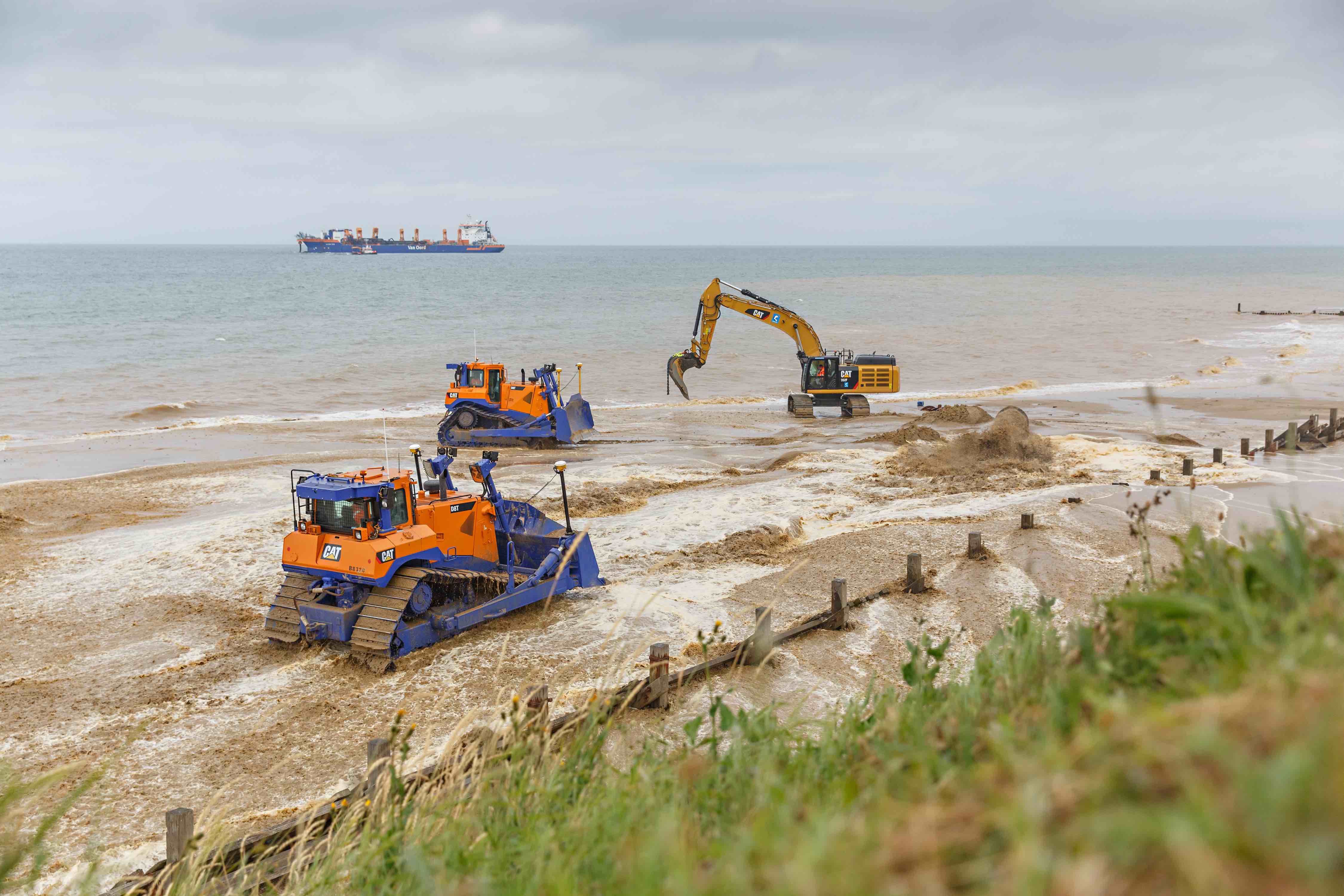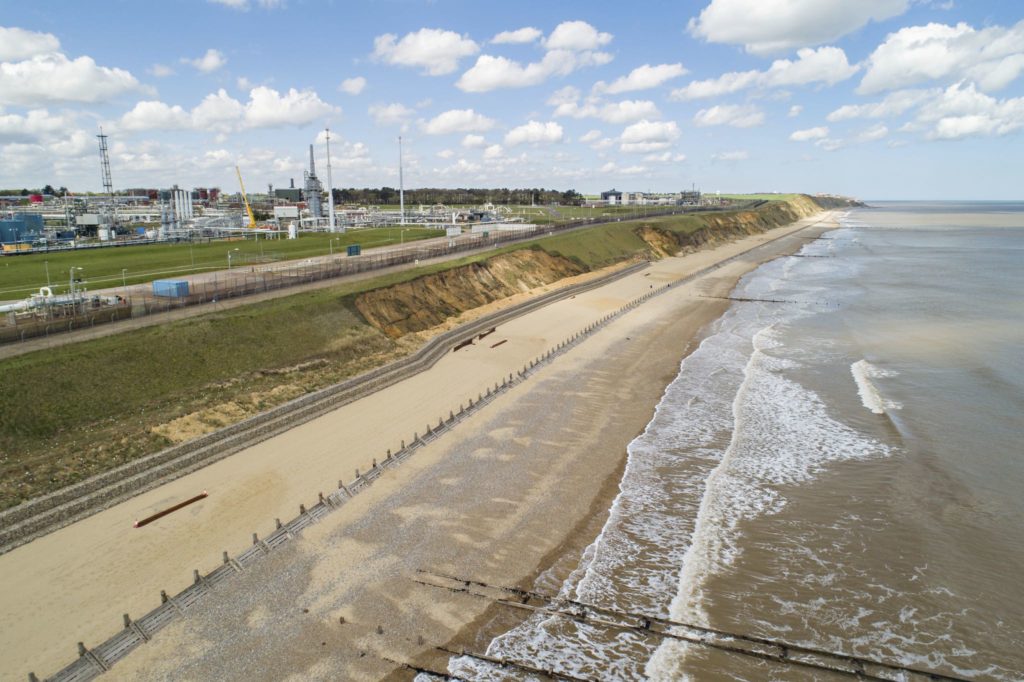
A enormous pile of sand – bigger than the Empire State Building in volume or enough to fill half of London’s Wembley Stadium – is being dumped on the east coast of England to protect a natural gas import terminal from worsening coastal erosion.
The “Sand Engine” at Bacton in Norfolk – which will total 1.8 million cubic metres dredged up by ship from the floor of the North Sea – will be the second of its kind in the world behind a far bigger 21.5 million cubic metres “Zandmotor” built in 2011 to protect the Dutch coastline near Ter Heijde.
A severe winter storm surge in December 2013 caused cliff erosion near the Bacton gas terminal and flooding in nearby villages – the sand will be a buffer to limit risks to Britain’s only link with continental Europe’s natural gas network.

Work started last week on the new “sandscaping” project with bulldozers spreading out the sand. It is due for completion in August.
“There has been a lot of interest worldwide” in sandscaping, said Jaap Flikweert, Flood and Coastal Management Advisor at Dutch engineering group Royal HaskoningDHV, which designed the project. “This is the first one outside the Netherlands.”
Using a mammoth sandcastle is a radical shift from concrete walls or dykes to keep seas at bay, and may be less harmful to wildlife by working with natural forces. In the Netherlands, the sand pile is being slowly washed along the coast by sea currents in a vast experiment to build up beaches and dunes.
Peru, Jamaica and Sweden have also been studied as possible sites for sand engines, Flikweert said in a phone interview. “My experience is that it’s not simple to translate new and radical concepts like this from the ‘strange’ Dutch context to other places,” he said.
The Norfolk sand engine will cost 17-18 million pounds ($21-22.5 million), mostly funded by Bacton Gas Terminal operators Shell and Perenco, and is expected to provide protection for 15-20 years.
Norfolk, where cliffs have been crumbling into the sea for centuries as part of natural shifts, is particularly vulnerable to climate change, including sea level rise, stoked by the use of fossil fuels such as coal, oil and gas.
Flikweert noted that the sand would be enough to half fill Wembley stadium.
Wembley says it encloses four million cubic metres inside its walls and under its roof. It notes that’s equivalent to 25,000 double-decker buses or 7 billion pints of milk. And the Empire State Building has a volume of just over a million cubic metres (37 million cubic feet).


Extraordinary stuff big fella. Seems to me sealevelrise.com is going from strength to strength.